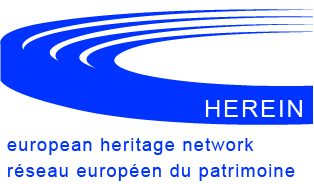 Slovenia
Slovenia
More detailed report: National Policy Report
Thesaurus: Thesaurus - Slovenian terms
Glossary: Terms in Slovenian
National coordinator: Zvezdana KOŽELJ

 CULTURAL HERITAGE POLICY
CULTURAL HERITAGE POLICY
The cultural heritage protection’s issue is a category in the Slovenian Constitution. According to the Cultural Heritage Protection Act (2008), the integrated heritage conservation is implemented through the spatial planning: respecting the importance of heritage, the competent authorities incorporate it into the sustainable development. Heritage of higher value ¬national or local monuments– are protected by local and national acts.
The Slovenian public protection service counts on interdisciplinary experts (technical, natural sciences, social sciences, human sciences, arts). Through its constructive cooperation with other institutions, national administrative bodies and heritage’s owners and managers, it aims to turn from a preventive into a co-creative heritage’s conservation.
For its part, the heritage protection policy until 2019 establishes the following Strategic goals:
- ensuring both the protection and the inclusion of the heritage in the modern life,
- ensuring stable financial resources to the national public service,
- improving its organization, working practices, and homogenous activities,
- preparing public service expert standards,
- raising awareness on the heritage and its protection, and
- ensuring a larger role of the Slovenian heritage at international level.
The enforcement of the Heritage Protection Strategy constitutes a further step in order to ensure the key role of the heritage within the development’s strategies.
 INSTITUTIONAL FRAMEWORK
INSTITUTIONAL FRAMEWORK

At national level, the government is in charge of approving acts on both monuments of national importance and funds for its restoration.
Ministry of Culture
It is responsible for carrying out the cultural policy and ensuring the heritage protection, in cooperation with other ministries and municipalities. This later is composed by the Cultural Heritage Directorate and its two bodies: the Archives of the Republic of Slovenia and the Culture and Media Inspectorate.
Cultural Heritage Directorate
It is in charge of preparing regulations, and carrying out the policy on the protection of immovable, movable, and intangible heritage at national level. Its actions are funded by the national budget and partially, by the European Structural and Investment Funds. Its experts are responsible for keeping the heritage’s databases, fostering the information system development; monitoring national projects; managing and over sighting co-funded interventions on national monuments and areas; coordinating and fostering the heritage protection by spatial planning; and ensuring the international cooperation as well as raising awareness.
Culture and Media Inspectorate
It monitors the implementation of legal provisions and specific regulations regarding immovable and movable heritage, archives, and libraries.
Institute for the Protection of Cultural Heritage
It is a national public institute established by the government. Composed by interdisciplinary experts, it is responsible for administrative tasks linked to the conservation of immovable, related movable and intangible heritage. For instance, it takes care of the identification, evaluation, and documentation of heritage; the preparation of proposals on registering heritage and designating monuments; the preparation and monitoring of conservation plans and restoration projects; -as well as the execution of conservation-restoration interventions in the most demanding monuments-; archaeological researches; educational activities and promotional actions. The Institute prescribes conditions and grants consents for interventions on immovable heritage.
The Institute is composed by:
- the Cultural Heritage Service which has 7 regional offices
- the Conservation Centre (with the Restoration Centre, the Preventive Archaeology Centre, and the Research Institute)
- the Development and Information Science Service.
Local level
Since the country is not divided into regions, municipalities act as basic local self-governance units: they are in charge of approving municipal planning acts, designating monuments of local importance, subsidizing restoration and other projects, managing municipality-owned heritage, and exercising pre-emption rights if monuments of local importance are being sold.
 LEGAL FRAMEWORK
LEGAL FRAMEWORK
- “Nacionalni program za kulturo” (National Cultural Programme) 2014-2017 (Summary):
- “Zakon o varstvu kulturne dediščine” (Cultural Heritage Protection Act) (2008)
- “Zakon o uresničevanju javnega interesa za kulturo” (Exercising the Public Interest in Culture) (2002)
 RATIFIED INTERNATIONAL CONVENTIONS
RATIFIED INTERNATIONAL CONVENTIONS
- The Granada Convention: ratified 1993, embodied in the 1999 Cultural Heritage Protection Act.
- The Valletta Convention: ratified 1999, embodied in the 2008 Cultural Heritage Protection Act.
- The European Landscape Convention: ratified 2003, partially embodied in the 2008 Cultural Heritage Protection Act.
- The Faro Convention: ratified 2008, partially embodied in the 2008 Cultural Heritage Protection Act.



